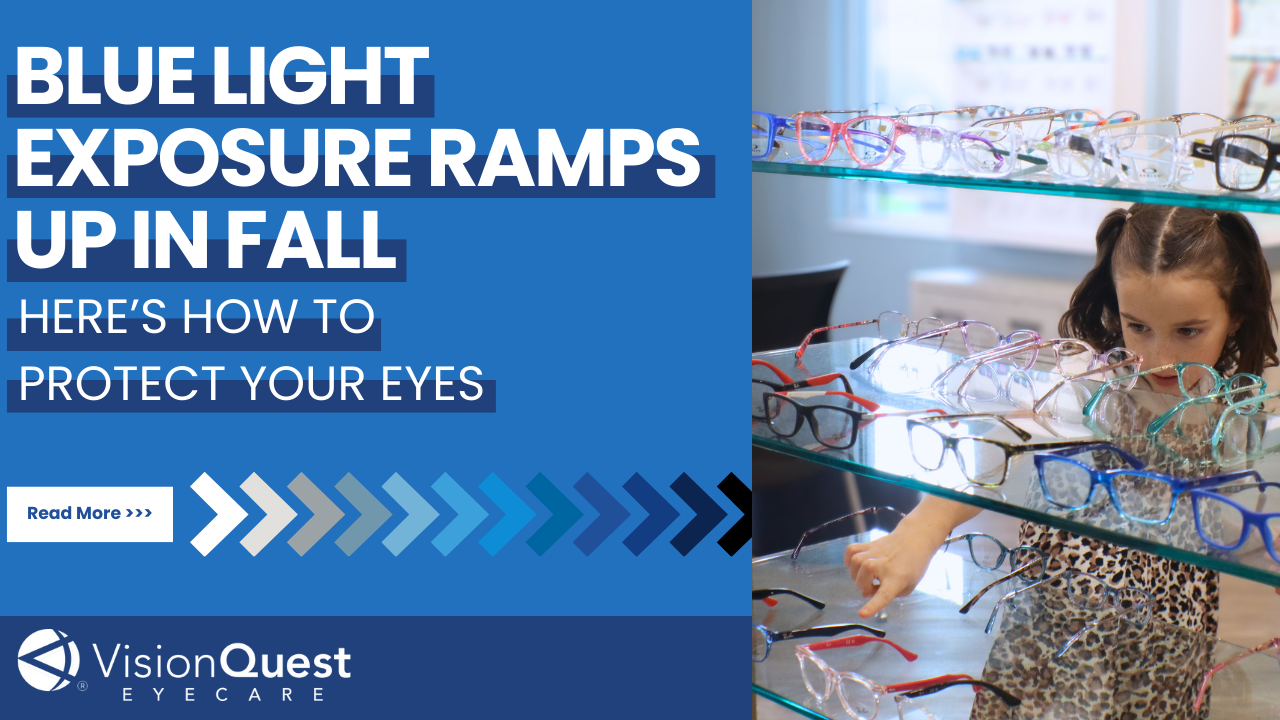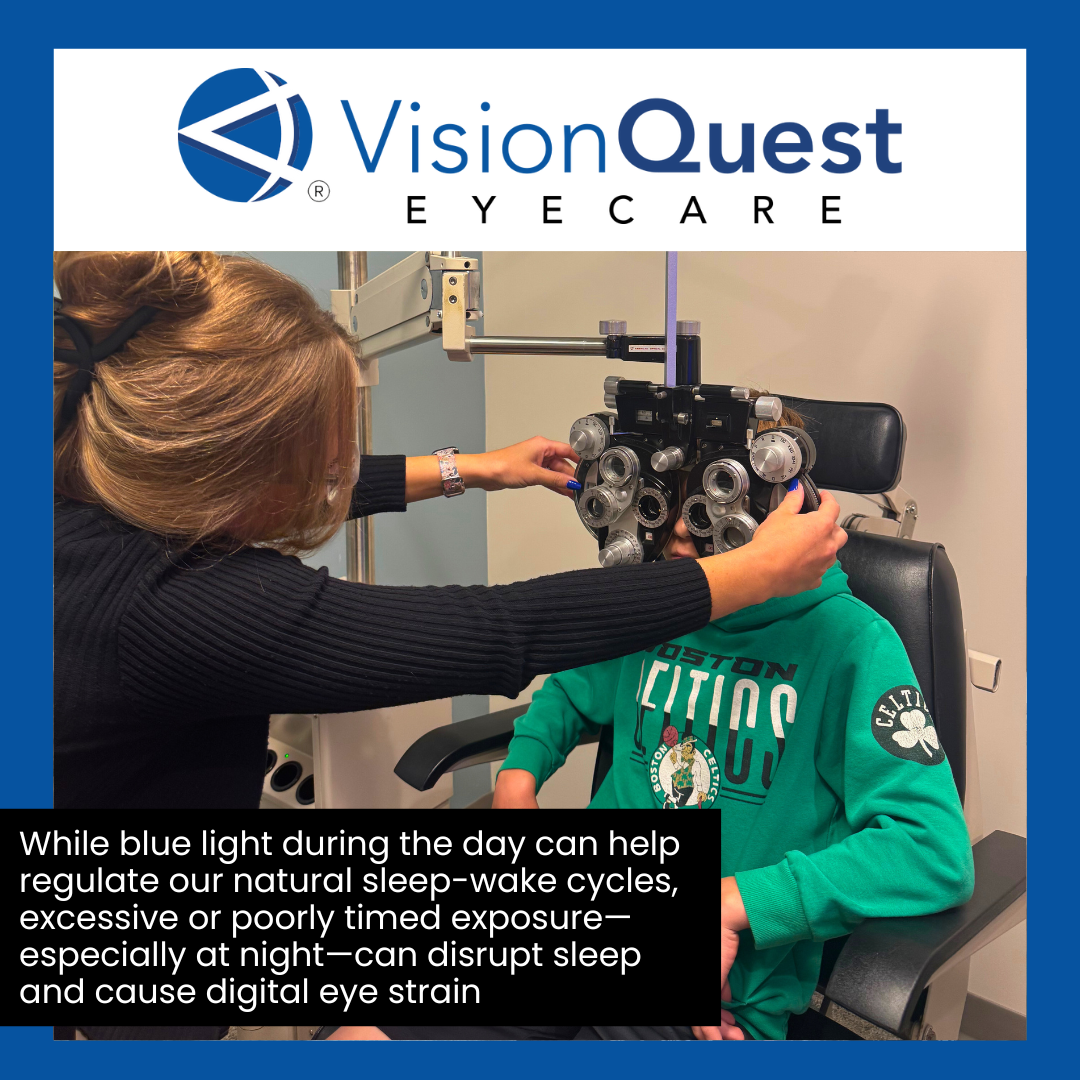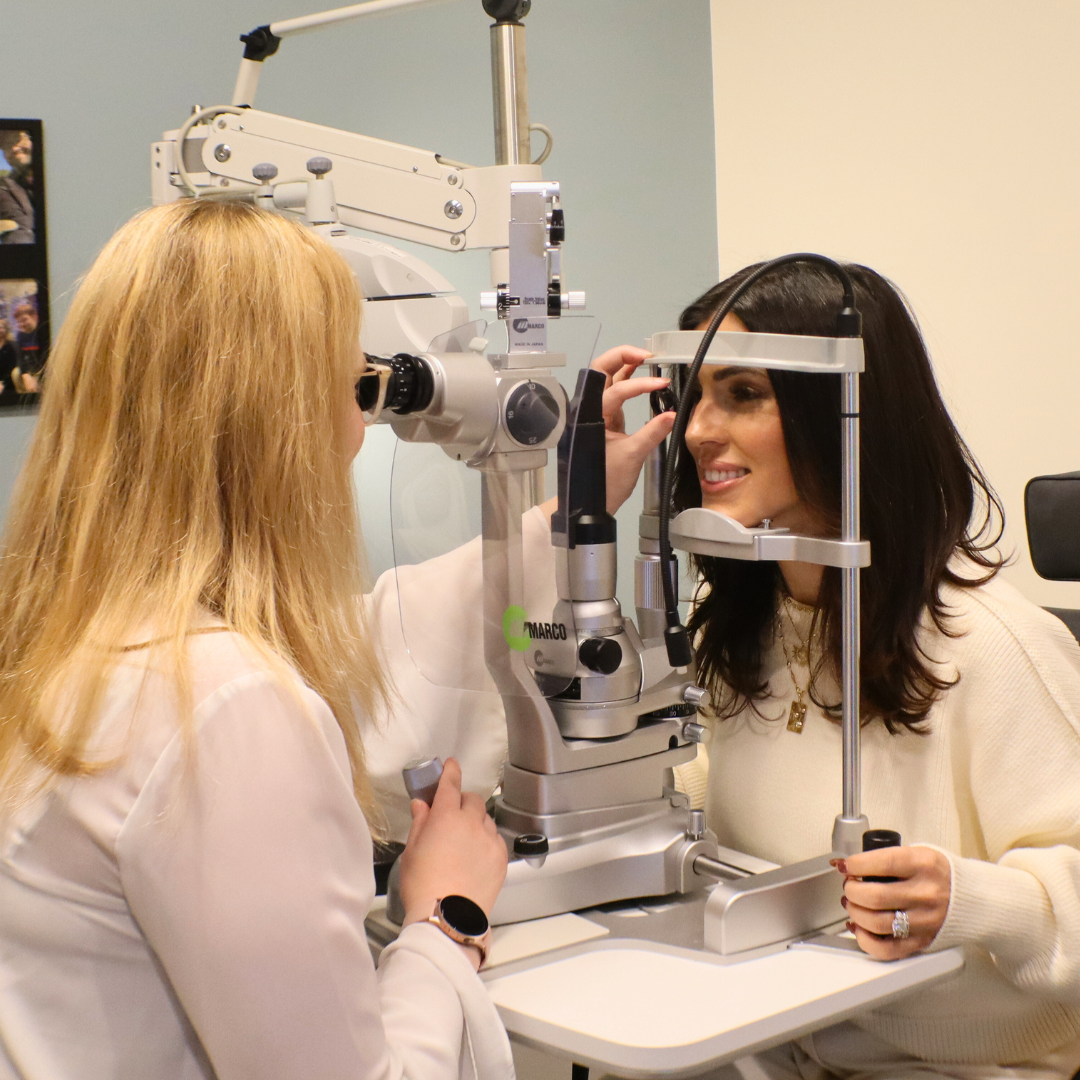As the leaves turn and the days grow shorter, our time spent outdoors begins to shrink, while our screen time indoors tends to ramp up. Whether you’re working remotely, helping kids with online homework, or curling up with your favorite shows, chances are you’re spending more time in front of digital devices than you did over the summer.
All that screen time means one thing: increased exposure to blue light, and with it, new challenges for your eye health. At VisionQuest Eyecare, we want to help you understand how seasonal habits affect your vision and how you can protect your eyes this fall and beyond.
What Is Blue Light, and Why Does It Matter in Fall?
Blue light is a high-energy visible (HEV) light emitted by the sun and digital screens like computers, smartphones, tablets, and TVs. While blue light during the day can help regulate our natural sleep-wake cycles, excessive or poorly timed exposure—especially at night—can disrupt sleep and cause digital eye strain.
In fall and winter, we naturally spend less time outdoors and more time on devices. The result? Our eyes are exposed to artificial blue light for longer periods, often without the breaks we naturally take during warmer seasons.
Who’s at Risk?
Everyone is affected by blue light to some degree, but certain individuals are at higher risk for its side effects:
- Parents and children navigating e-learning or homework
- Professionals working long hours on computers
- Anyone already experiencing dry eye symptoms
- Patients managing early myopia or progressive vision changes
For our many, this means juggling digital demands for the whole family while dealing with eye discomfort, headaches, or difficulty sleeping. Fortunately, there are simple and effective solutions.
Signs of Blue Light Overexposure
Think you might be feeling the effects of too much screen time? Here are common symptoms:
- Eye strain or fatigue
- Blurred vision
- Dry or irritated eyes
- Headaches, especially after screen use
- Trouble falling or staying asleep
If you’re noticing any of these, it’s time to take proactive steps to protect your eyes.
5 Practical Ways to Reduce Blue Light Exposure This Fall
You don’t have to give up your screen time, just be smarter about it. Here are five practical, eye doctor-approved ways to limit the impact of blue light:
1. Ask Your Eye Doctor If Blue Light Blockers Are Right For You
One of the simplest solutions is upgrading your current eyewear with blue light blocking lenses, but a simple solution isn’t always the right one. Make sure you ask your VisionQuest optometrist about the effectiveness of blue light blockers at your next eye exam.
If you already wear glasses or need a new prescription this fall, VisionQuest Eyecare offers blue light protection options for any frame style. You can read more about how these lenses work and if they’re right for you in our article: Do Blue Light Glasses Really Work?
2. Schedule a Comprehensive Eye Exam
Fall is an ideal time to update your prescription and check for any changes in your vision or eye health. During a comprehensive eye exam, our team at VisionQuest Eyecare will assess how screen time might be affecting your eyes and recommend personalized solutions, especially if you’re experiencing digital eye strain, dry eye, or early signs of myopia.
Regular eye exams are particularly important for kids, as increased screen time can accelerate myopia progression. Learn more about our approach to Myopia Management here.
3. Follow the 20-20-20 Rule
To prevent eye fatigue, encourage your family to follow the 20-20-20 rule: every 20 minutes, look at something 20 feet away for 20 seconds. It’s a small habit that makes a big difference in maintaining visual comfort throughout the day.
4. Adjust Your Lighting and Screen Settings
Harsh overhead lighting combined with bright screens can increase glare and strain. Here are some quick fixes:
- Use ambient, indirect lighting near workspaces
- Turn on night mode or blue light filters on devices after sunset
- Keep screens at eye level and an arm’s length away
These changes support eye health while maintaining productivity and comfort at home or work.
5. Address Dry Eye Symptoms Promptly
Cooler, drier air in fall can worsen dry eye symptoms, especially when combined with long hours of screen time. If your eyes feel gritty, watery, or fatigued, it may be more than just a seasonal nuisance.
Dry eye treatment is available at both our Greenwood and Fishers locations. We’ll determine the root cause and recommend relief strategies that work for your eyes and your lifestyle.
Why Fall Is the Right Time to Act
Many people wait until the end of the year to schedule eye exams or update prescriptions. But fall is the perfect season to get ahead of eye health issues—before the holiday rush and winter strain set in.
Upgrading your eyewear, protecting your family’s vision, and adjusting digital habits now can mean fewer headaches (literally) and better sleep as the days grow shorter.
Need Help? VisionQuest Eyecare Is Here for You
From selecting stylish blue light glasses to managing dry eye or myopia, VisionQuest Eyecare provides complete support for your family’s vision needs. We believe that healthy eyes are part of a healthy lifestyle, no matter the season.
Our team is here to answer your questions, provide expert care, and help you make the best decisions for your eye health. Ready to take the next step? Schedule an appointment with us today.

Dr. Deanna Rankin is an experienced optometrist at VisionQuest Eyecare, with a specialization in ocular surface disease, pre and post-operative care, and ocular disease management. Born and raised in Greenwood, Indiana, Dr. Rankin loves to serve her community in her hometown.



